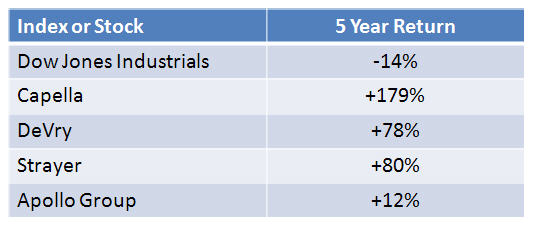Business’s Role in Educating our Workforce
Despite the uptick in business optimism from our mid-year TalentWatch® report, the US economy continues to be slow. This month we learned that there are 14.5 million Americans looking for work and 1.4 million of them have been out of work for more than two years. And the Labor Department just revised last year’s unemployment numbers and admitted that it had over-estimated employment by 1.4 million (and 44% of all unemployed have been looking for 27 weeks or more). In fact, if you do the math, it appears that throughout the first seven months of 2010 the US economy really did not create any significant new jobs (removing the impact of the Census).
And this is dramatically impacting the skills (and confidence) of the workforce. I spoke with the head of Talent Acquisition for a major employer seeking sales leaders last week and he told me that they now specifically focus on passive candidates (those not looking for work), because so many of the active candidates have been out of work for a long time. Skills really do atrophy when you are unemployed (as does your self-confidence of course).
Another striking statistic: while the “resume overload” which employers now see continues, it is slowly being replaced by a true reduction in “quality of hire.” A recent study of 200+ employers found that “quality of hire,” measured by asking hiring managers to rate the quality of their new employees, dropped 17% this year. This seems like a paradox: in an era of high-unemployment, wouldn’t it be easier to hire good people?
In fact the opposite is happening. High-performing workers are less likely to change jobs, so they are being more picky. Employers are now finding it harder to attract passive candidates, resulting in a labor squeeze on both sides: workers who have been unemployed a long time cannot find work; and managers are not finding the quality of candidates they need. Kind of a vicious spiral which seems to have no end.
The solution, of course, is training and education. According to the Department of Labor Occupational Forecast for 2018, nearly eight in 10 new jobs over the next ten years will require workforce training and higher education. And people know this. One of the fastest growing businesses in the US today is “for-profit” adult education. These companies (Apollo Group, Capella, Strayer, DeVry, and others), provide B.A. and B.S. degrees for working adults (you must be 25 years old to attend). They deliver high quality education through self-study means and have a wide variety of practical curriculum in careers like healthcare, IT, security, accounting, and sales.
Check this out:
Fig 1: Stock Market Returns on Adult Education vs. DJIA
I’m not here to recommend stocks, by the way – but rather point out a very important topic: your job as a business leader (CLO, training manager, HR manager, or VP of HR) is to help train our workforce. And this is not an altruistic goal: you must do this to survive.
Last month I spent a day with United Health Group, one of the country’s largest providers of healthcare insurance, services, technology, data, and other related products. From my standpoint UHG is a magnificent company: their understanding of management principles and talent strategies is among the top in any industry. As I talked with them about their leadership development, talent mobility, and other important programs, the Chief Learning Officer took me aside and asked me a question (and I paraphrase):
“We are seeing a steady decline in the readiness and skills of our call center workers in the last few years and find it more and more difficult to recruit the right caliber of people. What are other companies seeing and how are they dealing with this issue?”
My answer was simple: he has to invest in training these people. Companies like Boeing and Wal-Mart are investing millions of dollars in partnerships with organizations like Capella and Apollo to build evening degree and professional development programs for individual contributors in many roles. Training spending in professional skills is slightly up this year (after the total spending on training dropped 22% in the last two years). New hire onboarding and career development are now two of the hottest topics in Human Resources.
It is clear to me that training and education is not “the economic issue of our time,” but also “the economic issue of our businesses.” The small percentage of payroll we spend on training in the US (around 1.5% on average) is going to have to be refocused and readjusted to build core skills and capabilities among many new workers in the coming years.
Today the United States has fallen from first to twelfth in college graduation rates among young adults. While business leaders may not be able to solve this particular problem, we can build programs to train and equip people to meet the needs of our organizations. High-performing businesses will invest in these programs to “upskill” employees in all major roles.
And let me also add that this investment pays off. Not only does professional education improve skills and employee productivity, it makes people more engaged in your organization.
If you would like to learn more about world-class professional development and training strategies, please join our Membership Program.




Would you like to collaborate to make this happen?
Sheryl Ryder, Coordinator
California’s Business Education Leadership Project